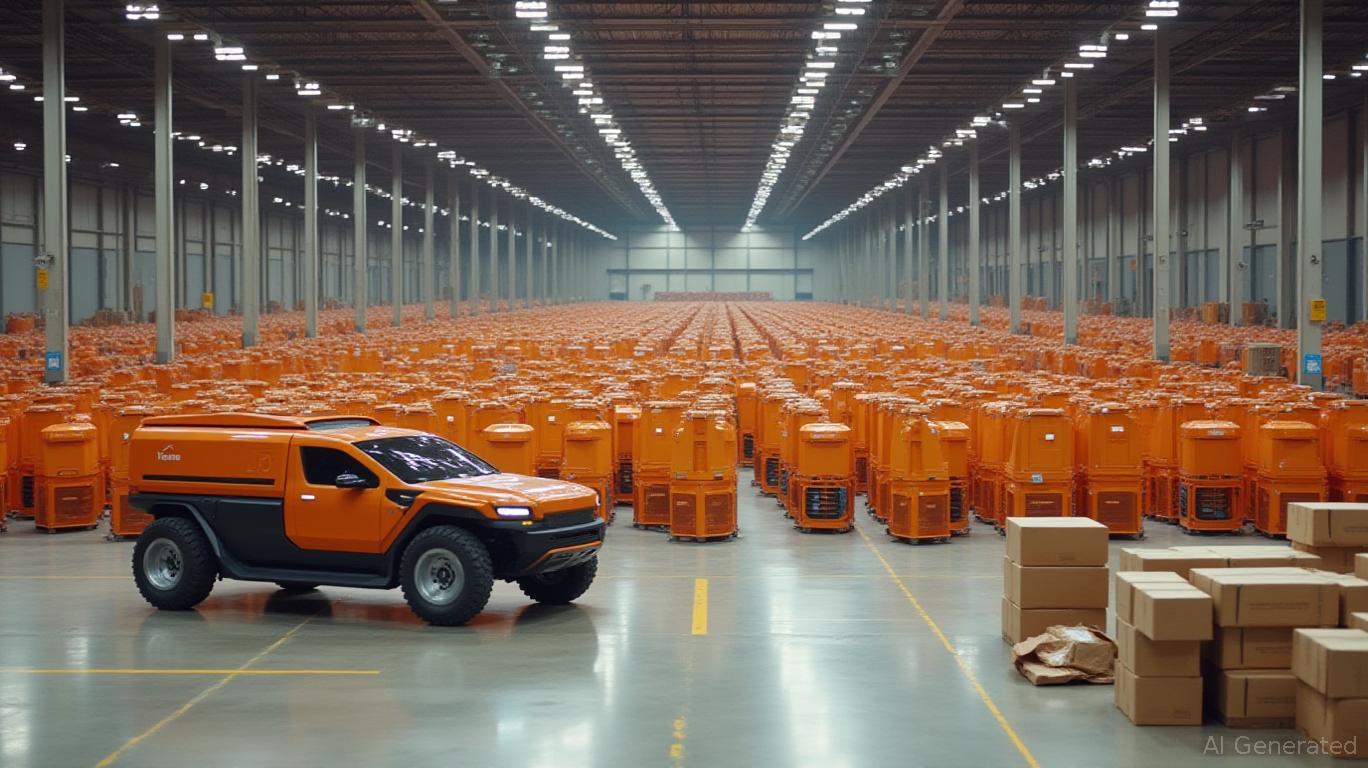Amazon's Robotics Dominance vs. Tesla's AI Hurdles: A Valuation and Risk Analysis

In the race to dominate the future of automation and artificial intelligence,
and Tesla offer starkly different investment profiles. While Amazon's robotics advancements and disciplined cost management underpin its stable valuation, Tesla's ambitious AI ambitions are overshadowed by execution risks, political volatility, and a sky-high price tag. This analysis evaluates both companies through the lenses of valuation, operational efficiency, and political risks, arguing that Amazon presents a more compelling long-term investment opportunity.Valuation: A Tale of Two Multiples
Amazon's price-to-earnings (P/E) ratio of 35x (as of Q2 2025) reflects investor confidence in its scalable, diversified business model. The company's AI-driven cost savings—projected to reach $7.1 billion by 2032—are already materializing. For instance, its 750,000+ warehouse robots have slashed fulfillment costs by 15% since 2020. Meanwhile, AWS's AI cloud services and Annapurna Labs' chip innovations position Amazon to capitalize on enterprise demand for automation.
Tesla, by contrast, trades at a 172x P/E ratio, nearly five times Amazon's multiple. This premium hinges on expectations of breakthroughs in autonomous driving, robotaxis, and AI-powered software sales. However, execution remains shaky. Tesla's Q2 2025 revenue guidance (projected at $164 billion) relies heavily on over-optimistic assumptions about robotaxi adoption and margin improvements. Analysts note that Musk's $150 billion in debt and Tesla's declining U.S. EV tax eligibility could crimp profitability.
Operational Efficiency: Precision vs. Hype
Amazon's robotics strategy is a masterclass in operational efficiency. Its Vulcan robots (designed for complex tasks like restocking shelves) and AI algorithms optimize warehouse workflows, reducing errors and speeding up delivery times. These systems are already generating tangible returns: Amazon's Q1 2025 operating margin rose to 12.7%, up from 9.3% in 2021.
Tesla's AI efforts, however, are mired in inconsistency. While its Full Self-Driving (FSD) software garners headlines, adoption rates remain low, with only 3% of U.S. Tesla owners paying for the $15,000 upgrade. Musk's shift toward $25,000 “Gen 8” electric vehicles could boost sales volume, but margins are likely to compress further. Analysts at Goldman Sachs warn that Tesla's 2026 gross margins could drop to 18%—a full 10 points below its 2022 peak—due to pricing pressures and battery-cost inflation.
Political Risks: Musk's Dilemma vs. Amazon's Caution
Elon Musk's public feud with former President Donald Trump and his flirtation with U.S. Senate candidacy have created political landmines for Tesla. A Bloomberg survey found that 30% of U.S. consumers would avoid Tesla products due to Musk's polarizing rhetoric. Meanwhile, Tesla's lobbying expenses surged to $12 million in 2024—a 50% increase from 2023—to combat regulatory hurdles like the $7,500 EV tax credit phaseout.
Amazon, in contrast, has largely avoided political entanglements. Its lobbying focus remains on AI regulation and worker safety, areas where it collaborates with policymakers to shape standards favoring scalable automation. This neutrality allows Amazon to navigate global markets with fewer reputational risks.
Investment Thesis: Buy Amazon, Wait on Tesla
Amazon (AMZN) is the clear winner for long-term investors seeking exposure to AI-driven automation. Its 35x P/E leaves room for growth, and its diversified revenue streams (e-commerce, AWS, entertainment) buffer against sector-specific downturns. The rollout of Vulcan robots and AWS's AI cloud services could further accelerate profit margins.
Tesla (TSLA), however, is a high-risk, high-reward bet. Its 172x P/E demands flawless execution on autonomous driving, cost controls, and geopolitical neutrality—challenges that Musk's polarizing persona complicates. Until Tesla delivers on its AI promises and stabilizes its balance sheet, the stock remains overvalued relative to its fundamentals.
Action Items:
- Buy AMZN at current levels for exposure to proven AI applications and stable cash flows.
- Avoid TSLA until its P/E ratio compresses to below 100x and execution risks subside.
In the automation era, Amazon's blend of innovation, discipline, and diversification offers the safest path to growth. Tesla's future hinges on Musk's ability to deliver on AI dreams while navigating political storms—a gamble best left to speculators.
Data as of June 2025. Past performance does not guarantee future results.

Comments
No comments yet